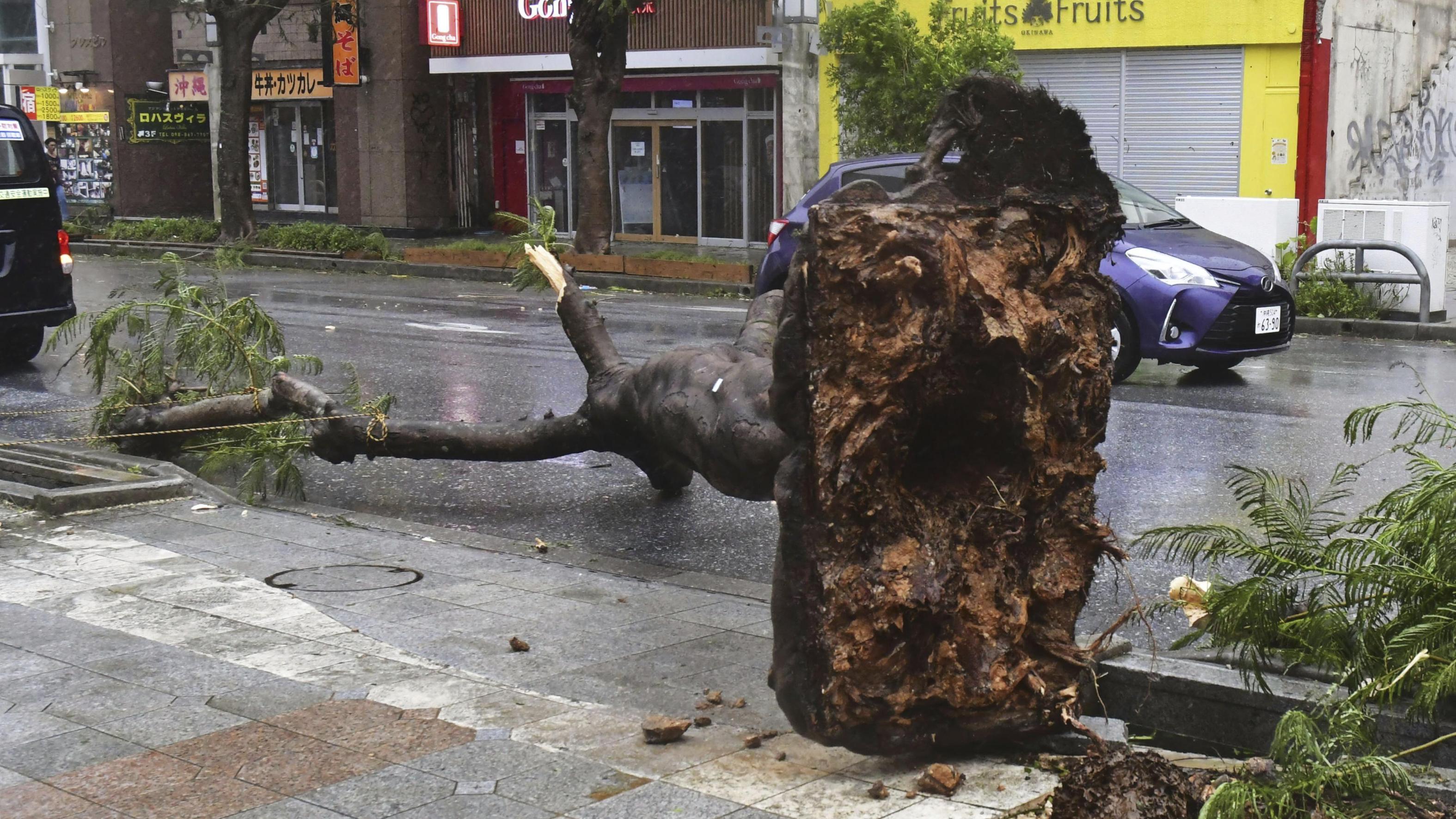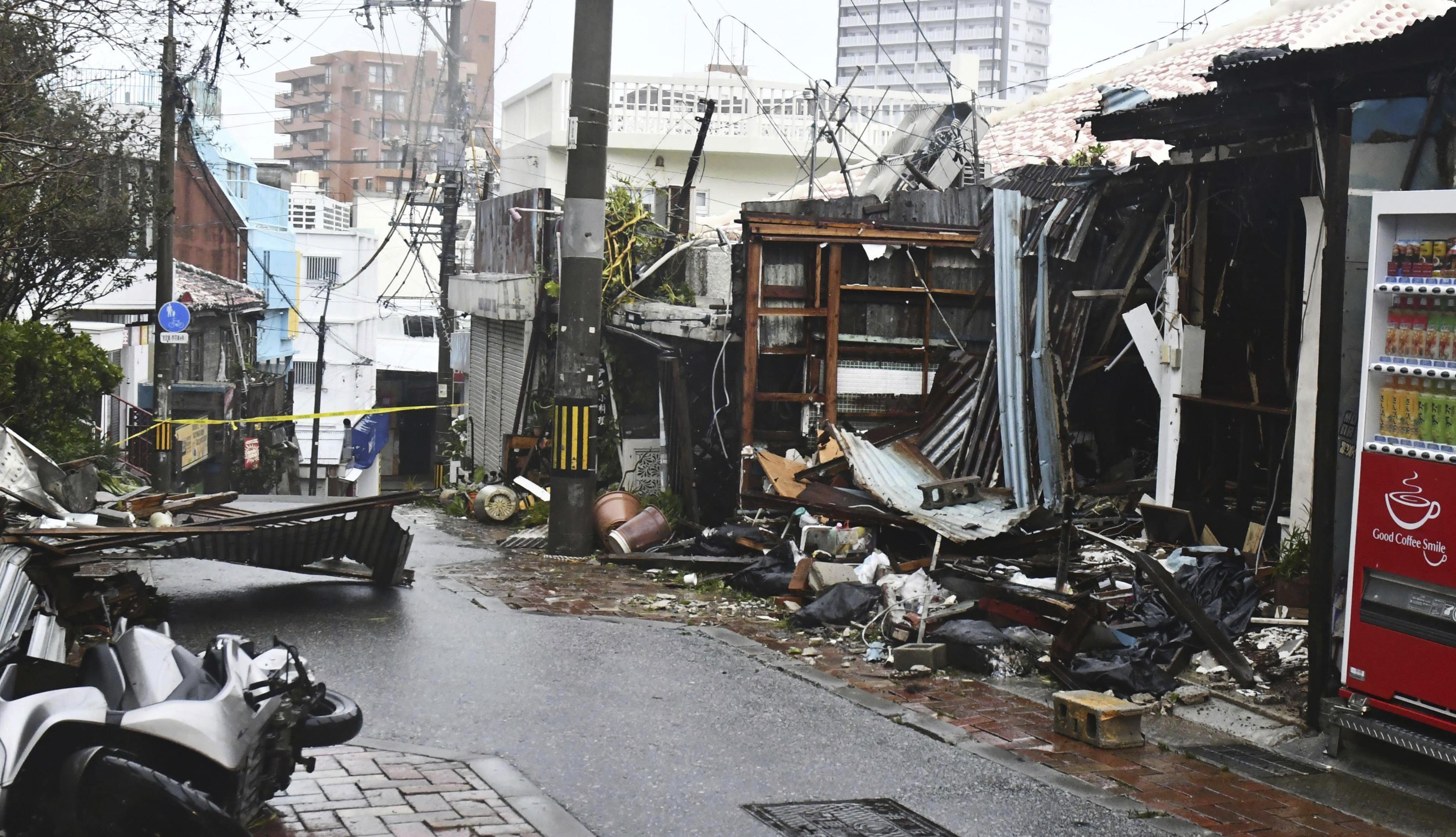 This photo shows a blackout due to Typhoon Khanun in some areas of Naha, Okinawa prefecture, southern Japan, Aug 2, 2023. (PHOTO / AP)
This photo shows a blackout due to Typhoon Khanun in some areas of Naha, Okinawa prefecture, southern Japan, Aug 2, 2023. (PHOTO / AP)
TOKYO - Typhoon Khanun pounded Japan's southwestern Okinawa and Kagoshima prefectures with heavy rain and gusty winds for a second straight day on Thursday, leaving two dead and moving so slowly its damaging impact could be prolonged.
Khanun, which means "jackfruit" in Thai, was heading slowly northwest in the East China Sea as of early afternoon, with sustained winds of 162 kph and gusts of up to 234 kph, the Japan Meteorological Agency said, adding that they no longer forecast it to directly hit China.
ALSO READ: Khanun: China activates level-IV emergency response
An elderly woman in Okinawa died when her house apparently caught fire because she was using candles since the power had failed, NHK public television said. The other fatality was a man in his 90s crushed when a garage collapsed.
At least 62 people in Okinawa and Kagoshima prefectures were injured, NHK added.
Naha Airport, located in Okinawa's capital city and the main gateway to the popular tourist destination, resumed operations on Thursday after shutting down for two days. Still, 304 flights were cancelled, the transport ministry said
With power lines down, roughly 166,000 households in Okinawa, a tropical island chain some 1,600 km southwest of Japan's capital Tokyo, had lost electricity as of Thursday morning, Okinawa Electric Power said - roughly 25 percent of the total, but down from Wednesday.
ALSO READ: Khanun kills 1, power outage hits 1/3 of Okinawa homes
Naha Airport, located in Okinawa's capital city and the main gateway to the popular tourist destination, resumed operations on Thursday after shutting down for two days. Still, 304 flights were cancelled, the transport ministry said.
The storm is predicted to make a sudden, sharp turn to the east on Friday and start heading for Japan's main islands - a situation that a JMA official said was unusual.
"Turning to the east isn't that odd, but turning so suddenly and sharply is," he said, declining to give his name in accordance with agency policy.
 Vehicles move past a fallen tree in Naha, south of Okinawa, Japan, Aug 2, 2023, as a typhoon was affecting the Okinawa islands. (PHOTO / AP)
Vehicles move past a fallen tree in Naha, south of Okinawa, Japan, Aug 2, 2023, as a typhoon was affecting the Okinawa islands. (PHOTO / AP)
"When storms move gradually to the east, they also trend northwards as well, meaning they weaken since the air and surface water temperatures go down. But staying to the south - as this one may do - makes it easier to maintain its strength."
READ MORE: 11 dead, 27 missing in rainstorms in Beijing
He added that it was far too early to predict whether the Japanese capital of Tokyo might be affected, but that the smallest main island of Shikoku might be.
Despite record-breaking heat in Japan, which saw its hottest July since record-keeping began in 1898, sea water temperatures are so far normal, he said.
 Damaged buildings are seen in Naha, south of Okinawa, Japan, Aug 2, 2023, as a typhoon was affecting the Okinawa islands. (PHOTO / AP)
Damaged buildings are seen in Naha, south of Okinawa, Japan, Aug 2, 2023, as a typhoon was affecting the Okinawa islands. (PHOTO / AP)
Power supply was down for about 6,550 households in the Amami islands in Kagoshima prefecture, north of Okinawa, as of 9 am (0000 GMT), according to Kyushu Electric Power. The tropical Amami chain is also likely to suffer prolonged rain.
READ MORE: Beijing reports heaviest rainfall in 140 years
Typhoon Khanun forced schools and businesses to shut in northern Taiwan on Thursday, with nearly 40 international flights being cancelled. The JMA official said the storm's impact there would depend on when it began turning to the east.
 Workers try to restore the destruction caused by Typhoon Khanun, at a shopping district in Naha, Okinawa prefecture, southern Japan, Aug 3, 2023. (PHOTO / AP)
Workers try to restore the destruction caused by Typhoon Khanun, at a shopping district in Naha, Okinawa prefecture, southern Japan, Aug 3, 2023. (PHOTO / AP)


